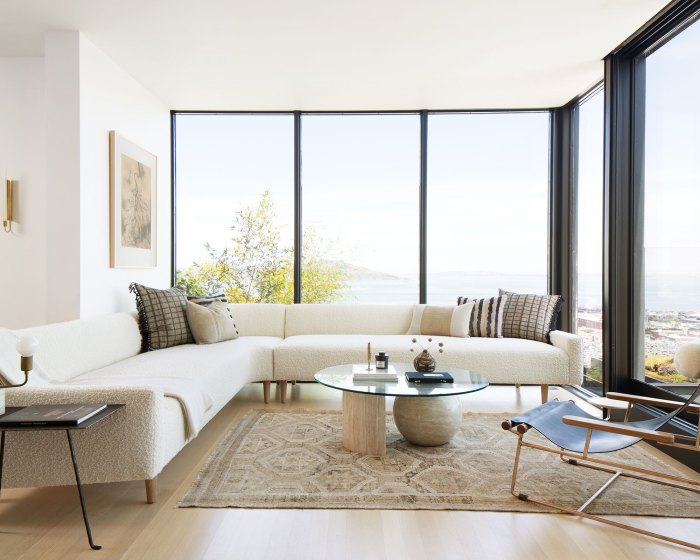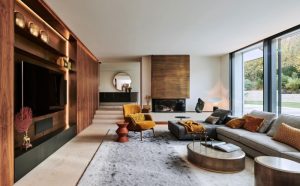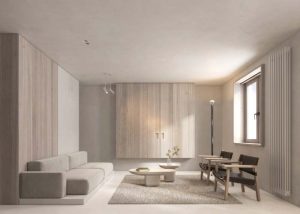
Modern Living with Minimalist Aesthetic sets the stage for this enthralling narrative, offering readers a glimpse into a story that is rich in detail with casual formal language style and brimming with originality from the outset.
Exploring the essence of minimalist design and its impact on modern living, this discussion delves into the fusion of functionality and aesthetic appeal in creating serene living spaces.
MINIMALIST DESIGN

Minimalist design is centered around simplicity, clean lines, and a focus on functionality. The key principles of minimalist design include the use of a limited color palette, the elimination of unnecessary elements, and an emphasis on open space.Famous minimalist designers such as Ludwig Mies van der Rohe, known for his iconic Barcelona Pavilion, and Dieter Rams, renowned for his work at Braun and his “Ten Principles for Good Design,” have made significant contributions to the minimalist design movement.Minimalist design influences modern living spaces by promoting a clutter-free environment, allowing for better organization, and creating a sense of calm and tranquility.
By incorporating minimalist elements such as sleek furniture, neutral colors, and simple forms, modern living spaces can achieve a sophisticated and timeless aesthetic.
MODERN CLASSICS
Modern classics in interior design refer to timeless pieces that blend contemporary elements with traditional influences, creating a harmonious balance between past and present aesthetics.
Comparison with Other Styles
When compared to other styles, modern classic furniture stands out for its clean lines, simple forms, and minimal ornamentation. It is often characterized by a neutral color palette, high-quality materials, and elegant finishes.
- Modern Classic vs. Contemporary: While contemporary furniture focuses on current trends and innovation, modern classics prioritize enduring design principles that withstand the test of time.
- Modern Classic vs. Traditional: In contrast to traditional furniture, modern classics offer a more streamlined and understated look, blending vintage charm with a modern twist.
- Modern Classic vs. Mid-Century Modern: Mid-century modern furniture emphasizes organic shapes and functional design, whereas modern classics exhibit a more refined and sophisticated aesthetic.
Enhancing Minimalist Aesthetic
Integrating modern classic pieces into a minimalist living space can elevate the overall design by adding depth, warmth, and character without overwhelming the simplicity of the environment.
- Balance: Modern classic furniture can serve as focal points within a minimalist setting, creating a visual balance between functionality and style.
- Texture: Incorporating modern classic pieces with different textures and finishes can introduce tactile elements that enhance the sensory experience of the space.
- Statement Pieces: Selecting key modern classic items, such as iconic chairs or tables, can infuse personality and sophistication into a minimalist interior without cluttering the visual space.
MODERN LIVING

In the realm of minimalist aesthetics, modern living embodies sleek, clean lines, open spaces, and a focus on functionality. The essence of modern living lies in simplicity, efficiency, and a clutter-free environment that promotes a sense of calm and tranquility.
Importance of Functionality in Modern Living Spaces
Functionality is paramount in modern living spaces as they are designed to serve multiple purposes efficiently. Every element in a modern living space is carefully curated to optimize usability while maintaining a minimalist aesthetic. From multifunctional furniture to smart storage solutions, functionality ensures that the space is not only visually appealing but also practical and comfortable for everyday living.
- Invest in furniture with dual purposes such as storage ottomans or convertible sofa beds to maximize space.
- Opt for built-in storage solutions like hidden cabinets or wall-mounted shelves to keep the space clutter-free.
- Choose sleek and simple designs for appliances and fixtures that blend seamlessly into the overall minimalist aesthetic.
- Ensure adequate lighting and ventilation to create a bright and airy atmosphere that enhances the modern living experience.
Tips on Incorporating Modern Living Elements into a Minimalist Design
To infuse modern living elements into a minimalist design, consider the following tips to achieve a harmonious balance between style and functionality.
- Embrace neutral color palettes such as whites, grays, and earth tones to create a sense of serenity and sophistication.
- Focus on quality over quantity when selecting decor and furnishings, opting for timeless pieces that will stand the test of time.
- Integrate technology seamlessly into the design with smart home features that enhance convenience and efficiency.
- Create designated zones within the space for different activities like work, relaxation, and entertainment to promote organization and flow.
In conclusion, Modern Living with Minimalist Aesthetic encapsulates the beauty of simplicity, highlighting the harmonious blend of clean lines, functional elegance, and timeless design principles. Dive into this lifestyle and elevate your living space with the essence of minimalism and modernity.
Essential FAQs
How can minimalist design enhance a living space?
Minimalist design can create a sense of calm, spaciousness, and sophistication by focusing on essential elements and decluttering the space.
What are some famous minimalist designers known for their work?
Renowned minimalist designers include John Pawson, Tadao Ando, and Dieter Rams, known for their sleek and minimalistic creations.
Why is functionality important in modern living spaces?
Functionality ensures that a living space is practical, efficient, and tailored to the needs of its occupants, promoting comfort and ease of use.
How can modern living elements be incorporated into a minimalist design?
Integrating technology, versatile furniture pieces, and sustainable materials are ways to infuse modern living elements into a minimalist aesthetic seamlessly.





